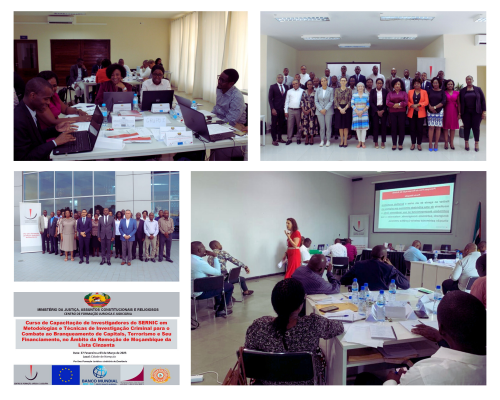How can Estonia have the lowest risk of money laundering in the Basel AML Index?

In 2019, Estonia achieved the lowest risk score out of the 125 countries in the Public Edition of the Basel AML Index, 2.68 out of 10. In fact, Estonia has consistently been among the top performers since 2012, when the Basel AML index was first calculated.
Yet Estonia hit headlines two years ago with a massive money laundering scandal: EUR 200 billion of suspicious payments (non-resident money from Russia and other former Soviet states) were channelled through the tiny Estonian branch of Danske Bank between 2007 and 2015.
With such huge media attention on this scandal, it is understandable that some people question the veracity of the Basel AML Index. If you are one of those people, please read on.
Reliance upon data sources
The Basel AML Index Public Edition is a composite index, meaning it provides a simplified comparison of countries’ risks of ML/TF. Each country's risk score is calculated from available data and does not represent an opinion or subjective assessment by the Basel Institute.
In that sense, we are bound by what the data and methodology reveal and cannot tweak individual countries’ risk scores if they don’t match our subjective perceptions. In the same way, a good scientist does not fiddle the results of an experiment if it doesn’t match her initial expectations but instead seeks to understand why it does not.
Estonia receives good scores in reputable data sources – including from the Financial Action Task Force (FATF), Transparency International, the World Bank and the World Economic Forum – dealing with corruption and financial, legal and political risks.
The Basel AML Index reflects these scores, not the scandals.
No recent FATF evaluation – and none planned
Estonia’s low risk score is largely driven by its good performance in its 2014 FATF Mutual Evaluation Report by Moneyval, the regional monitoring body for AML/CFT. FATF Mutual Evaluation Reports are a crucial indicator in the Basel AML Index, as they are the main instrument for assessing and comparing countries’ legal and institutional AML/CFT frameworks.
The 2014 report, which produces a score of 3.61 out of 10, states that Estonia’s supervisory framework is “broadly sound”, and the authorities “have been effective in confiscating and seizing property in ML and drug related cases”.
Estonia’s score may worsen when it is re-assessed according to the latest FATF methodology, which focuses on the effectiveness of AML/CFT measures and not only technical compliance with the FATF’s 40 Recommendations. Not only is it common for countries to obtain poorer scores when assessed with the latest methodology, but Estonia has been subject to recent criticism of its effectiveness in preventing ML. In fact, this is precisely what happened to Malta.
The FATF does not seem to have scheduled an onsite mission to Estonia in the next three years. Consequently, it will not drastically change its risk score in the Basel AML Index for at least the next three years.
Skewed perceptions: is what we see all there is?
The Basel AML Index measures the risk of money laundering, not the actual amount of money laundering. This would be an impossible task given the hidden nature of illicit financial flows.
ML/TF risk is understood as a broad risk area in relation to a country’s vulnerability to ML/TF and its capacities to counter it.
In countries with low risks of ML/TF thanks to strong legislation, high levels of media freedom and sufficient transparency – like Estonia – money laundering offences are clearly more likely to be uncovered than in countries with the opposite conditions. This can lead to the flawed perception that the country has more ML/TF offences simply because they have been brought to light.
A similarly flawed conclusion would be finding a rotten apple in a transparent container of apples, and thinking that apples in the transparent container are more likely to be rotten than apples in the closed container that nobody can inspect.
No country is free of money laundering risks
Estonia's risk score of 2.68 out of 10 – where 10 equals the highest risk of ML/TF – is still a risk.
There has never been, and never will be, a country with zero risk of money laundering. Why? Because corrupt officials and criminals are adept at finding ever new and clever ways to launder their proceeds of their crimes.
And yes, there are systemic issues with Estonia’s AML/CFT systems. Most of the money laundering scandals hitting headlines in the last two years, including the Danske Bank scandal, date back around 8–12 years and took place over long periods of time.
The cases raised serious systematic concern about the quality of supervision and effectiveness of public-private efforts related to AML/CFT. They highlight why no country should become complacent when it comes to money laundering.
Long-term measures vs. short-term cover-ups
We can expect more money laundering schemes to be uncovered in the next years, including in countries generally regarded as low risk. Part of the reason why the recent scandals were uncovered is thanks to enhanced levels of investigative journalism and data sharing, accompanied by increased public demand for open information globally.
Countries that respond to these positive trends and demands by increasing their levels of transparency and supervision, for example by creating transparent beneficial ownership registries, may see a short-term increase in the uncovering of money laundering schemes.
We can understand why governments fear lifting up their carpets and revealing what's underneath. But the alternative is to continue providing a hiding place for dirty money from criminals and organised crime networks, so we would encourage them to be brave.
Can one-off media reports and scandals be taken into account in the Basel AML Index?
Each year the Basel Institute brings together external experts from a diverse set of AML, compliance and risk assessment backgrounds to review the methodology of the Basel AML Index for continued validity and adequacy, and to discuss trends in global AML regulation and practice that may impact its effectiveness.
At the 2019 review meeting, one question discussed was whether the Basel AML Index could and should take into account case-based data on money laundering such as the Panama Papers, Paradise Papers, scandals such as the Danske Bank and Swedbank cases, and other investigations by investigative journalism associations such as the OCCRP.
It was decided not to include case-based data due to the following reasons:
- Time lags between real cases and detection. After a number of ML cases, some national regulators increased fines imposed on financial institutions for failing to enforce AML regulations. The resulting penalties were often imposed for transactions that happened many years previously. This huge time lag between real cases of AML misconduct and detection/sanctioning is problematic for an Index that is updated annually.
- No regular updates. ML/TF cases in the media appear without any predictable regularity. It is impossible to provide updates to the data and to change positions of countries.
- Countries cannot demonstrate progress. Once a country is labelled a high-risk jurisdiction on the basis of its involvement in a ML media scandal, it is not possible for it to demonstrate progress in this area.
What other factors should be considered when assessing ML/TF risk?
In the case of Estonia, the data in the Basel AML index does not reflect the risk of Estonia’s geographic proximity to Russia and the issues that may be associated with this. Estonia has been labelled as one of the first ports of entry for Russian money launderers wishing to gain access to the European financial market.
Trade-based money laundering is another factor to take into consideration. The FATF identifies three main methods by which criminal organisations and terrorist financiers move money for the purpose of disguising its origins and integrating it into the formal economy: use of the financial system; physical movement of money (e.g. cash couriers); physical movement of goods through the trade system.
The Basel AML Index focuses mostly on the first two ways, with less coverage of financial crime facilitated by international trade. This is due to a lack of comparable data on trade-based money laundering. We are investigating data sources with a view to covering this aspect in future editions of the Basel AML index.
An analysis of recent high-profile money laundering cases, including the Danske Bank scandal, reveals several other red flags for money laundering that financial institutions and companies should take into account in addition to country risk. These include politically exposed persons (PEPs), non-resident legal persons and issues around shell companies in offshore jurisdictions.
Photo of Tallinn, Estonia by Maria Geller from Pexels.




